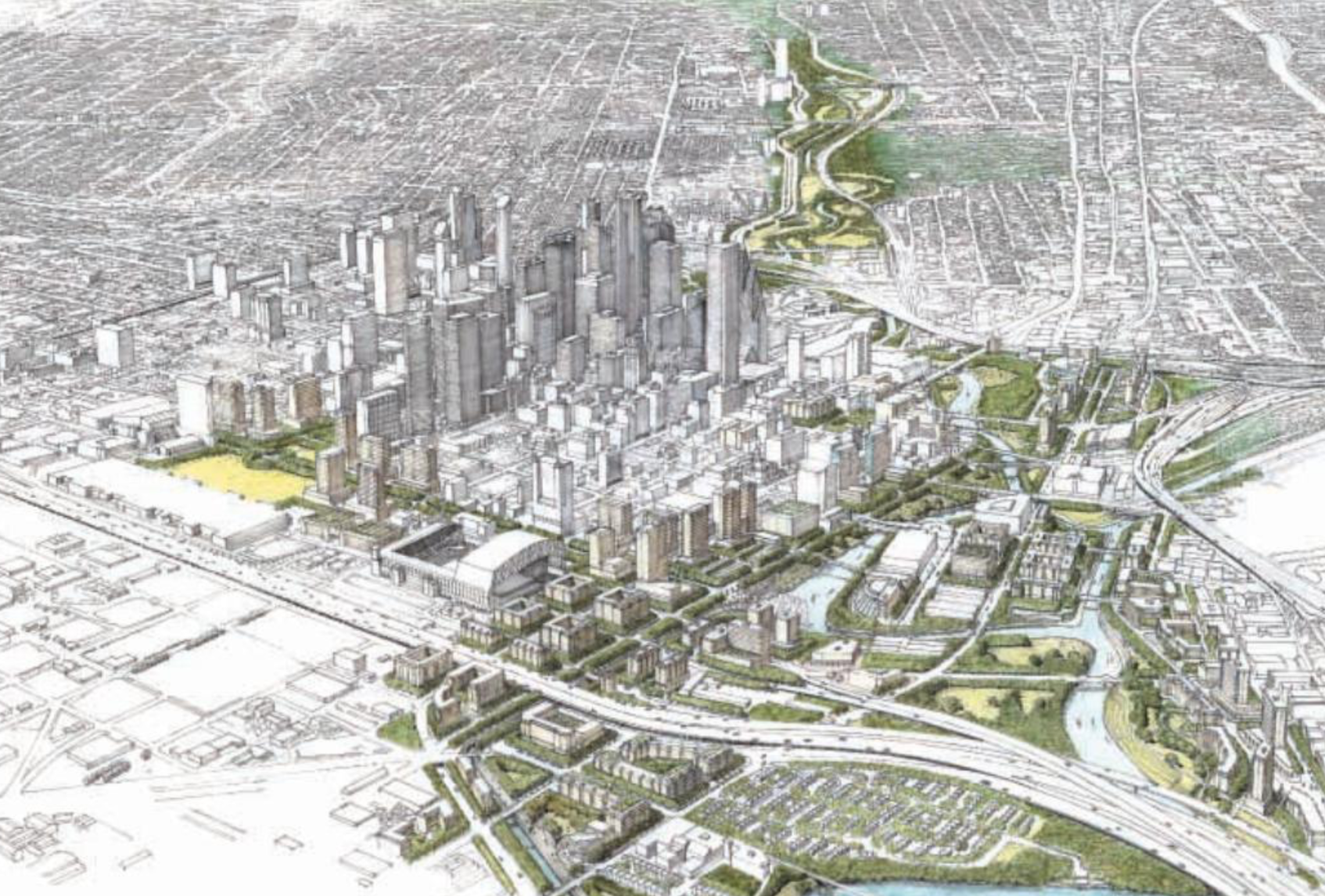The I-45 Project
The North Houston Highway Improvement Project (NHHIP) – popularly known in Houston as “the I-45 project” – is the biggest transportation infrastructure project this city has seen for decades, since the freeway system was first constructed. Looking beyond its sheer size, the project will shape mobility and development patterns for decades to come, meaning that the manner in which it is carried out will shape our future.
At an estimated cost of $7 to $10 billion, the I-45 project being designed by the Texas Department of Transportation (TxDOT) aims to tackle mobility problems all the way from North Houston to Midtown, south of downtown. Planning on the project has been in the works for nearly 15 years. With the ongoing release of draft impact reports and work toward a final environmental impact statement under way, the start of construction could begin within the next year or two.
On the North Side, TxDOT will widen I-45 to accommodate high-occupancy vehicle lanes and will likely expand the frontage road on both sides.
Through Downtown, the project would re-route I-45 alongside I-69 (the former Highway 59) to the east of the George R. Brown Convention Center (GRB) and decommission, if not remove, the Pierce Elevated, thus reconnecting Downtown and Midtown. A seven-block “cap” will cover the freeway behind the GRB, creating the possibility of a park that reconnects Downtown to EaDo. South of Downtown, TxDOT will change I-69 from elevated to depressed, connecting it to the depressed I-69 freeway through Montrose and several small caps will be constructed over the freeway near Main Street. Proposed plans can be seen in the video below.
Source: Texas Department of Transportation
Mayor Sylvester Turner has characterized the I-45 project as “transformational,” and it certainly holds the potential to knit Downtown back together with surrounding neighborhoods. At the same time, maximizing the value of TxDOT’s investments – for example, by building a park atop the freeway cap behind the convention center – will cost hundreds of millions of dollars to be raised locally. And recently, community activists on the North Side have criticized the project’s potential impact on neighborhoods there. They point to concerns that the project will reinforce the impacts of earlier generations of highway building, that it will cause a decline in walkability through impacted neighborhoods and that the larger roadway will affect the health of residents.
Over the next few weeks, the Kinder Institute for Urban Research at Rice University will publish several blogs from those involved in the I-45 project discussions, including Mayor Turner, TxDOT, and community leaders Downtown and on the North Side. It is not our intent to take a position on the I-45 project but to foster a robust public debate about how the project will affect the city. Will it truly improve mobility? Will it knit the city together better, tear it apart more – or will it do both at the same time? Will it help solve existing flooding problems or make them worse? As TxDOT moves quickly toward building the project, are there ways to make it better?
These blogs won’t answer the questions posed above. But they will air out the issues and, we hope, help engage the people of Houston in the question of how best to use such an enormous infrastructure project to make our city a more livable and competitive 21st Century city.
Read the entire I-45 project blog series:
North Houston Highway Improvement Project offers a once-in-a-lifetime opportunity
(Bob Eury, president of Central Houston)
How the I-45 project will affect two affordable housing communities
(LaRence Snowden, chairman of the Board of Commissioners for the Houston Housing Authority)
The big picture for a big plan
(Quincy D. Allen, P.E., TxDOT Houston district engineer)
TxDOT’s I-45 project could hurt a school and its community. But there are ways to mitigate the harm.
(Oni K. Blair, executive director of LINK Houston)
What’s ‘good’ about the North Houston Highway Improvement Project
(Houston Mayor Sylvester Turner)

